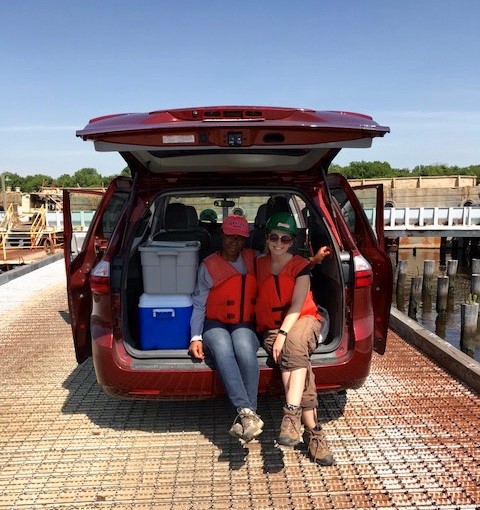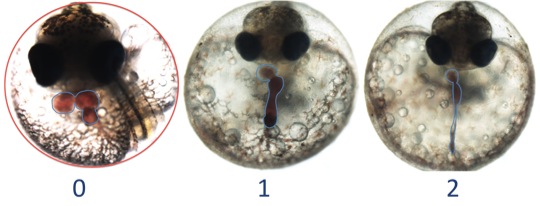By Alice Carroll, Summer Intern in Dr. Richard Di Giulio’s Lab
This summer I’ve been working in an environmental toxicology lab at Duke University through the Duke Superfund Internship opportunity. The Di Giulio lab works closely with two types of fish: Atlantic killifish (Fundulus heteroclitus) and zebrafish (Danio rerio). The killifish, also known as mummichogs, are often used as fishing bait. Our lab goes on field trips, which I was almost able to attend this summer but Covid-19 restrictions prevailed, to collect samples of killifish from the Elizabeth River in Virginia. The scientists in our lab make the exhausting trip because the fish there have adapted to pollution sites on the river. The fish come from a variety of sites on the river; one that is considered a reference site with no pollution (Kings Creek), several that have moderate PAH concentrations, like Jones Creek and Pescara, and those that have high concentrations at Atlantic Wood Industries and Republic Creosoting.

These areas on the Elizabeth River are contaminated with polycyclic aromatic hydrocarbons (PAHs), which come from the industrial processing sites on the river. Until the 1990s, wood treatment plants used creosote, an oil-derived product with high PAH concentrations, which contaminated the river. The killifish have adapted to these pollutants being in their water and are able to survive, but these same adaptations prevent them from living in clean water. In the Di Giulio lab, researchers are working to understand how the PAHs and other pollutants impact their health. This raises the question- is there a cost to adapting to live in their polluted environment?
The fish I worked with this summer were the zebrafish. These are not collected from the environment like the killifish, but are bred with controlled PAH exposure to see the generational effects on their development. This study was started before I was at the lab, when the first female fish were fed benzo(a)pyrene (BaP), a type of PAH, and bred four generations out to see how the initial exposure impacts later generations. This summer I bred the fifth generation of zebrafish and looked at endpoints during their development to evaluate their health.
I found the pericardial area (PCA) endpoint to be very interesting because I could visually see the abnormalities in the fish resulting from the generational exposure. The pericardium is what surrounds the heart and usually has a little bit of fluid in it. I would look at the fish under a microscope and measure this area when the embryos were four days old.

These are two pictures I took of fifth generation embryos that were generationally exposed to a low dose of BaP. The one on the left has a normal pericardial area, but the one on the right has pericardial edema. This is when the fluid sac is way too full and creates a bubble of fluid around the heart, causing the heart to stretch and not work as well. If these fish five generations out from the initial exposure are still having health issues, what could humans be experiencing from pollutants that our grandparents were exposed to?
Overall, I’ve really enjoyed being back in the lab this summer. I declared an environmental science major this past spring, and being able to do research related to that has solidified my interests. I hope to continue discovering the fishy truth about environmental health and what we can do to restore it!
Citations
Jayasundara, N., Fernando, P. W., Osterberg, J. S., Cammen, K. M., Schultz, T. F., & Di Giulio,
R. T. (2017). Cost of Tolerance: Physiological Consequences of Evolved Resistance to
Inhabit a Polluted Environment in Teleost Fish Fundulus heteroclitus. Environmental
Science & Technology, 51(15), 8763–8772. https://doi.org/10.1021/acs.est.7b01913





